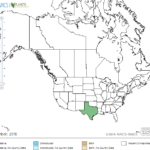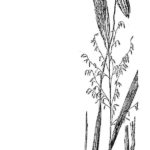Zizania texana
USDA, NRCS. 2018. The PLANTS Database (http://plants.usda.gov, 28 March 2018). National Plant Data Team, Greensboro, NC 27401-4901 USA.
Illustration: USDA-NRCS PLANTS Database / Hitchcock, A.S. (rev. A. Chase). 1950. Manual of the grasses of the United States. USDA Miscellaneous Publication No. 200. Washington, DC.
What is Texas Wild Rice?
Physical Characteristics
Leaves:
- Grass
- Linear
- Narrow
- 0.12-0.98 inches wide
- Up to 78.74 inches long
Flowers:
- Branching
- Stalk 6.3-12.2 inches long
- Small
Seeds:
- Cylindrical
- 0.17-0.3 inches long
- 0.04-0.06 inches wide
Stem:
- Clumping
- 3-6 feet long
- Black, brown or greenish in color
Where Does it Grow?
Texas wild rice can be found in fast-flowing rivers.
Pros and Cons of Texas Wild Rice
Submerged portions of all aquatic plants provide habitats for many micro and macro invertebrates. These invertebrates in turn are used as food by fish and other wildlife species (e.g. amphibians, reptiles, ducks, etc.). After aquatic plants die, their decomposition by bacteria and fungi provides food (called “detritus”) for many aquatic invertebrates.


